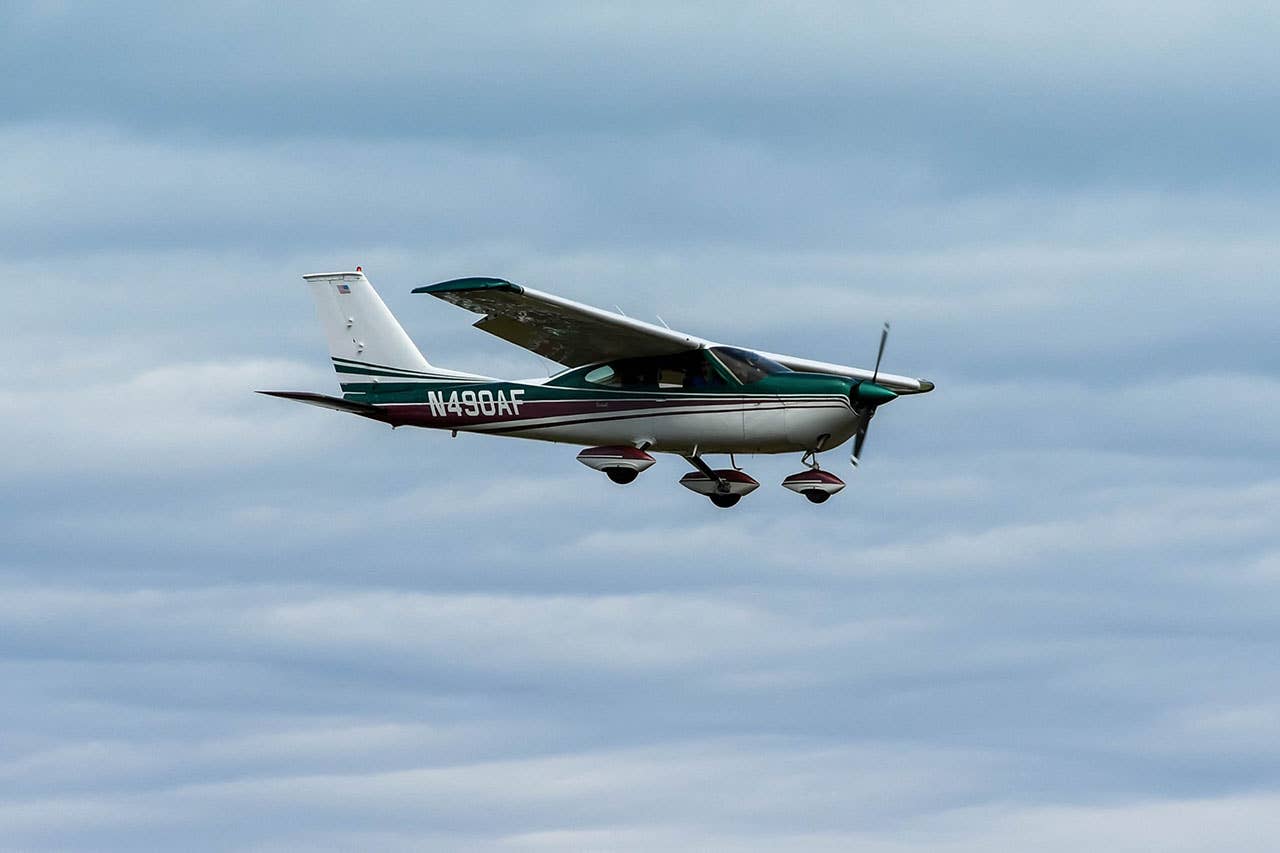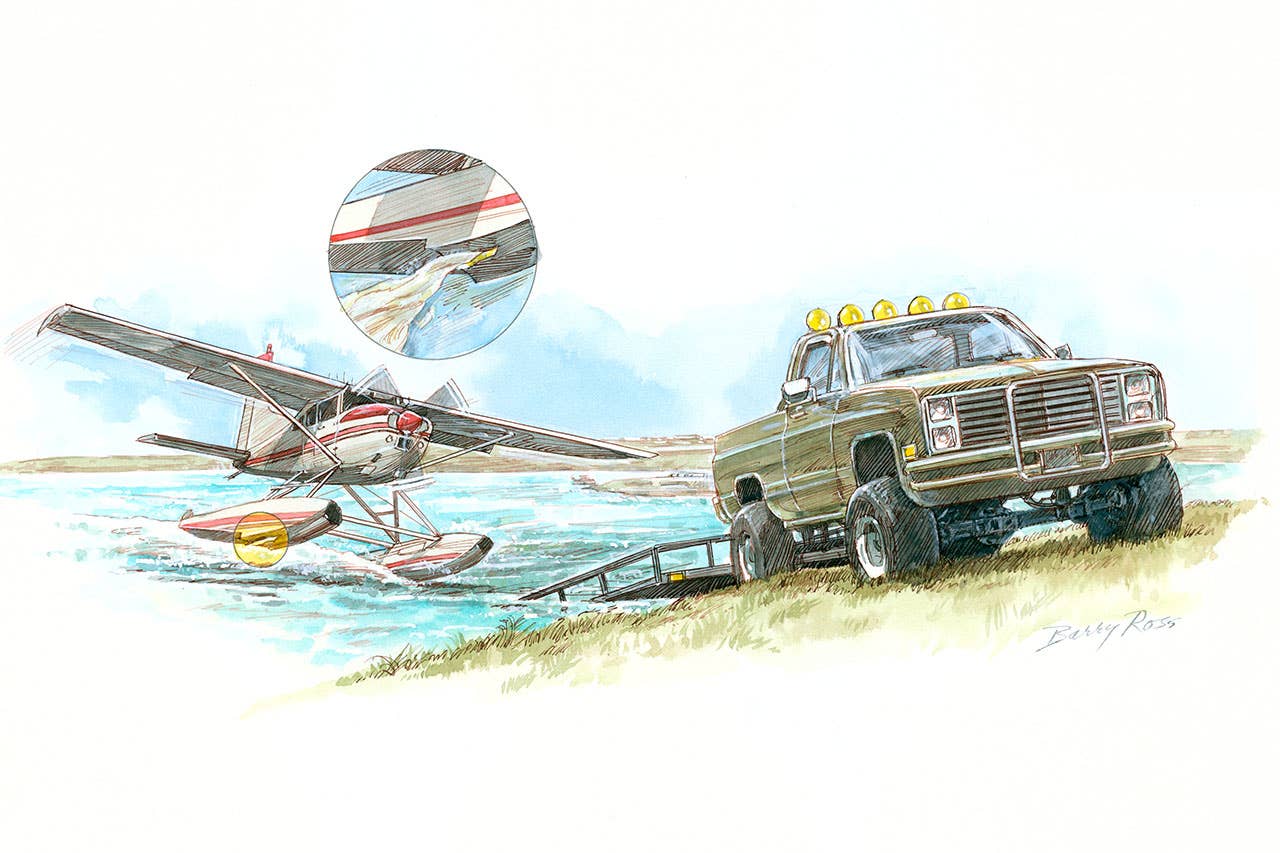
Let's face it, who has not looked skyward with awe and respect as the Thunderbirds, Snowbirds or Blue Angels performed their intricate maneuvers and said, "How do they do that?" Well, the truth is, these formation aerobatic demonstrations are the product of long hours of training, incredible flight discipline, and immaculately prepared high-performance flying machines. However, back down here in general aviation land, we occasionally have good reasons to fly two or more aircraft in close proximity, and when we do it, we should be just as professional. The formula for a successful formation flight is not hard to understand. The training, discipline and effort put into flying formation the right way will make it a safe and fun experience.
But make no mistake, you need to get qualified, professional training before you fly formation.
General aviation pilots often fly in formation to take air-to-air photography, travel cross-country in groups of two or more aircraft, or ferry multiple aircraft across desolate continents and vast oceans. However, no matter which type of formation is involved, a professional approach is required to reduce the risks.
So, let's suppose that three friends decide to fly in formation from their home airport to AirVenture in Oshkosh, Wisconsin. What things should they consider before they take off, while traveling en route, and upon arrival at the world's greatest airshow?
Gaggle or Formation Flying?
In general aviation speak, a gaggle is more often a group of aircraft generally heading in the same direction at the same time! The pilots in the gaggle may exercise varying degrees of radio discipline, occasionally get too close to one another, and generally give proper formation flying a bad name. The difference between a formation and a gaggle is the application of training, discipline and communication.
The FAA rules for formation flight are deceptively simple and are contained in part 91.111: "(a) No person may operate an aircraft so close to another aircraft as to create a collision hazard. (b) No person may operate an aircraft in formation flight except by arrangement with the pilot in command of each aircraft in the formation. (c) No person may operate an aircraft, carrying passengers for hire, in formation flight." So, let's think about how we can avoid a gaggle and create a professional formation flight.
The Formation Briefing
An old formation joke among jet pilots goes: "Kick the tires, light the fires, and brief on guard frequency." However, it is just that, a joke. In fact, the military formation briefing and the debriefing are critical to the success of any formation flight.
During the briefing, the formation leader determines the prior training, capabilities and personal safety limits of each participant. Communication frequencies, airspace, weather and en route decision-making should all be discussed. For example, how will the flight handle the Fisk arrival at AirVenture? Or what does the flight do if they become separated during the trip? Who squawks, and what about the ADS-B traffic warnings? All good things to consider.
Once the details have been resolved, the flight should be planned and briefed in detail until every question is answered and every what-if is run to ground. This is where the FAA's "arrangement" comes in. If, after the brief, any member of the formation does not feel like they are comfortable enough to proceed, then they should politely opt out of the flight.
In the end, everyone must be confident in the safe conduct of the flight. By the way, the internet is a good place to start as it has several good formation briefing guides that pilots can download to remind them of what should be covered.
Lead or Wing!
Contrary to popular opinion, the hardest position to fly in any of the jet aerobatic teams is not the wing-position pilot flying inches from their leader. Rather, it is the leader responsible for planning, briefing and making decisions for the entire flight. The leader of our trip to AirVenture should first and foremost understand that the formation will be limited to the skills of the least-experienced member of the group. Taking this into account, the leader can make the kind of conservative in-flight decisions and maneuvers that will not exceed the capabilities of the formation. Pilots flying the wing have a whole different set of responsibilities.
The first rule of flying the wing is don't lose sight of the leader or the rest of the formation! No exceptions. This is especially challenging in many modern glass cockpit aircraft that encourage significant head-down time and require multiple button pushes to do the simplest thing. If any inside-the-cockpit attention is required, widen out the formation. Fly only as close as necessary, and if you lose sight of any member of the formation, have a "lost visual" strategy at the ready. This is usually an agreed-upon turn away from the last known position of the other aircraft until visual contact can be reestablished. And an important safety tip: It is a good idea to leave close wingtip formation to the professionals.
Remember, as you watch the Thunderbird pilots, they are each flying aircraft with clear canopies, wearing parachutes and sitting in ejection seats. If that does not describe the aircraft you are flying, then plan to fly a much looser formation. And while we are on that point, note that several high-wing aircraft are unsuitable for close formation flying due to the large visual area blocked by the wing.
Anticipate, Communicate and be Predictable!
The pilots in our intrepid band of Oshkosh-bound aviators have decided to fly a loose V formation approximately 200-500 feet apart as they head north to Wisconsin. Our fearless leader should select airspeeds, routes and altitudes that allow the rest of the flight to cruise comfortably out of the weather and free from restricted airspace. They should anticipate these requirements, communicate them clearly to the rest of the formation, and fly in a very smooth and predictable manner.
And, of course, wing pilots should do the same. Numbers two and three should anticipate what the leader is going to do next, just as if they were flying solo, and communicate their desires or traffic observations to the formation in a clear and concise manner. And, just like the leader, fly in a smooth and predictable manner. These three characteristics---anticipation, communication and predictability---will make for a great trip with very manageable risks. So, you ask, how can I learn to do this from the professionals?
Quality Training is the Key!
It is no secret that the large formation flights into AirVenture such as "Cessnas to Oshkosh" and "Bonanzas to Oshkosh" (B2OSH) require each participant to attend and complete regional formation training clinics before flying to the show. No certificate, no participation. This focus on training ensures the safety of all participants. A good guide to all things formation is the "Formation Pilots Knowledge Guide" developed by the Formation and Safety Team (FAST). The FAST concept was developed in the mid 1990s to give the warbird community a single set of formation standards. It contains a wealth of knowledge about the fundamentals of formation flying.
Risk Management of Formation Flying
Our three trusty aviators have made several good decisions to manage the risks. First, everyone agreed to get training from a reputable source on the basic rules for formation flying. Second, they spent the time required to plan and brief the flight, so that everyone can fly the plan smoothly, predictably and professionally. Third, they have considered the responsibilities of both the lead and wing and are prepared for their assigned role. And just maybe, as they fly over the Wisconsin pastures headed to Oshkosh, someone will look up and say, "Those pilots are real professionals. How do they do that?"
Do you want to read more Pro Tips For Private Pilots columns? Check out "Making the Most of Your Flight Review" here.

Subscribe to Our Newsletter
Get the latest Plane & Pilot Magazine stories delivered directly to your inbox






